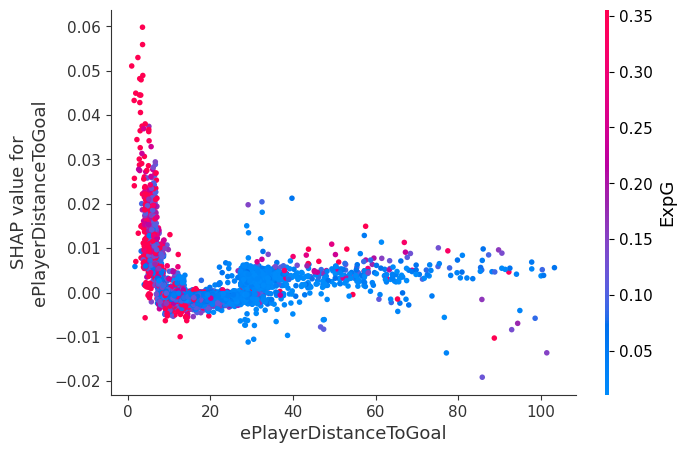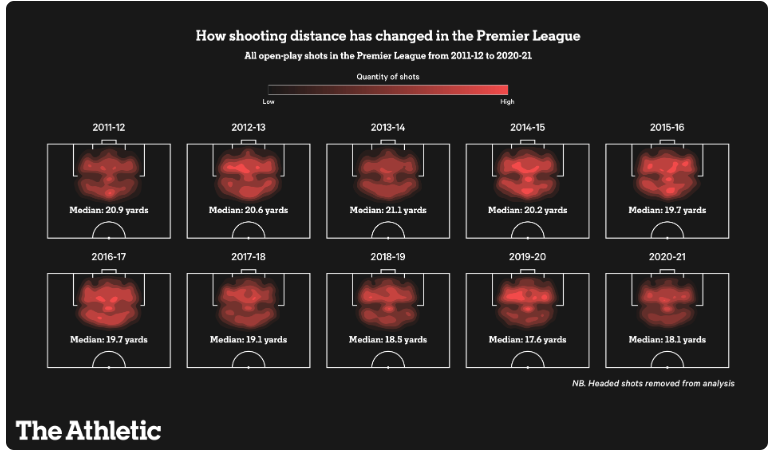
APFA
June 10, 2025
The Extra Pass: A Modern Marker of Efficient Attacking Play
I started watching football in 2008 and quickly fell in love with the game. I watched games, interviews, and punditry daily. What stood out to me was the emphasis on a striker’s selfishness – taking shots when possible, running at defenders, and being strong. Nowadays we don’t hear it that much, we are in an era of football where everyone needs to work hard, defend for the team, play for the team and be selfless, this is where the EXTRA PASS comes in.
What is an extra pass? In coaching terms, it means always trying to look for a pass that leads to a higher probability of a goal.
With the evolution of analytics in football and with xG (Expected Goals) being popularized in 2012 with Sam Green of Opta, teams are now using analytics to improve their game. For instance, the percentage of shots outside the box have reduced quite drastically since 2004. From 2004 to 2012, we see a 2% drop, and from 2013 to 2025 we see a 12-13% drop. This coincides with the year xG was formalized and popularised.

Source: https://www.premierleague.com/news/4272809
So how does xG relate to the “extra pass”? Well, the xG model is correlated to the player’s distance to goal. That said, the closer you are to the goal, there is a higher likelihood of scoring the goal. To maximize xG, players need to progress the ball as close they can to the goal, be selfless, and pass the ball for a clearer chance at the goal. Look for that Extra Pass. Below is a plot of xG heatmap from datofutbol.

Source: https://www.datofutbol.cl/xg-model/
As a Data Scientist and an analyst at the Colorado Rapids, I created models using tracking data in the MLS to help with recruitment. The graph below is produced from one of our models. It displays the interaction of two features inside our model: xG and the Player’s Distance to Goal. You can see how the shapley values work for this— the closer the player is to the goal, the higher the importance. This infers that you should shoot closer to the goal in order to maximise the xG.

The Extra Pass is a simple term that is rooted in analytics and used by coaches to make a complex term such as xG simpler. Be selfless; try to find a player closer to the goal that is more open. Always keep your head up to look for a clearer chance of scoring. Football has very few high value opportunities to score from, so it’s imperative to take your chances that maximize putting a score up on the board.
As seen by the graphic below, the median Premier League shot distance has reduced significantly since 2012. Similar to what we see in the MLS.

Source: https://theathletic.com/3145563/2022/02/24/how-shot-locations-have-changed-in-the-premier-league/
Day by day, football is becoming more data-driven. Currently, strikers work harder than before. Gone are the days when strikers only had one role: Shoot the ball into the net, be selfish, and only defend when they want to For ex Zlatan Ibrahimovic. Now, strikers need to help the team defend from the front and when necessary, look for that Extra Pass, and play for the team. Harry Kane is the perfect example of that profile. Erling Haaland, who is more of a Zlatan Profile athletically and physically, is a workhorse who helps with defending, and is more likely to play a ball that maximizes the chance of a goal, rather than hitting one in outside of the box.
The philosophy of the extra pass does not always mean that a player can’t seek their own chances. The idea of extra pass entails players to always have their head up and look for a clearer pathway to the goal by passing it to another teammate that may be better positioned and at a better angle to score the goal.
Written by APFA member & Colorado Rapids Analyst, Kuran Juneja
